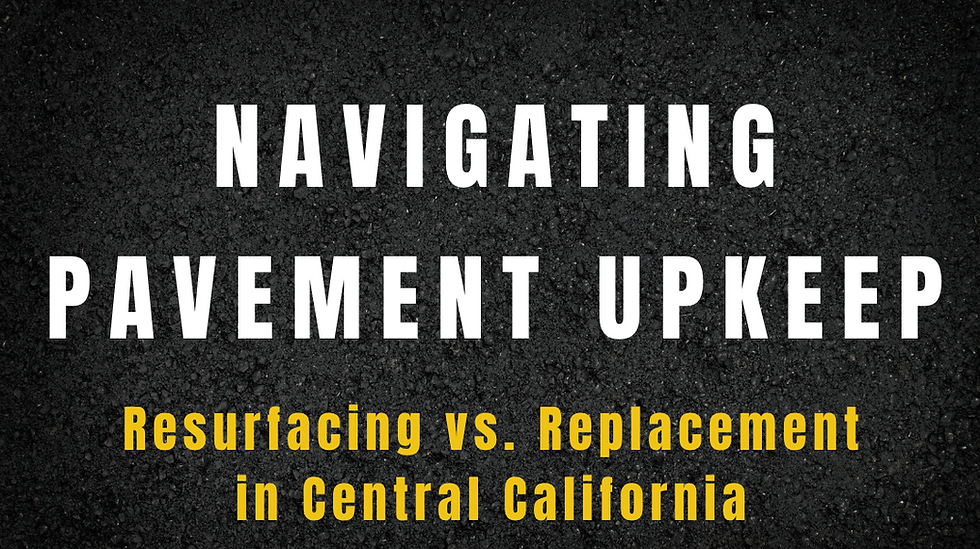Pothole Prevention and Repair- Tips and Tricks to Take Down Potholes
- Central Coast Paving
- Jul 24, 2023
- 2 min read

Navigating potholes can be frustrating and potentially dangerous for motorists and property owners alike. But what causes these road nuisances, and how can we prevent and fix them? At Central Coast Paving, we've witnessed first-hand the impact that our unique climate and high traffic volumes can have on pavement durability. In this post, we’ll explore the root causes of potholes, preventative measures, and repair solutions.
Why Do Potholes Form?
Potholes are a result of asphalt or concrete pavement's wear and tear due to traffic and weather. They typically form when water seeps into the pavement through cracks, then expands and contracts with temperature fluctuations. This process weakens the pavement structure, and as vehicles drive over these weakened areas, the surface eventually breaks down, forming a pothole.
Preventing Potholes
1. Proper Installation: A well-installed pavement is the first line of defense against potholes. It's crucial to ensure that the base layer is properly compacted and the asphalt or concrete is evenly laid.
2. Sealcoating: Regular sealcoating is essential for asphalt pavements. It provides a protective layer that prevents water from seeping into the pavement, thus minimizing the risk of pothole formation.
3. Prompt Crack Repair: Addressing cracks promptly can prevent them from evolving into potholes. Whether it's a minor hairline fracture or a more significant gap, swift and professional repair is crucial.
4. Regular Inspections: Routine pavement inspections can help identify potential problem areas before they develop into larger issues.
Fixing Potholes
When a pothole does form, it's crucial to address it as quickly as possible to prevent further deterioration. The process typically involves these steps:
1. Clean the Pothole: Remove any debris from the pothole, ensuring a clean surface for the repair material to adhere to.
2. Apply the Filler: A hot or cold asphalt mix is applied to the pothole. Typically, cold mix is used as a temporary filler until hot mix can be installed.
3. Compact the Filler: The filler material is then compacted until it's level with the pavement surface.
4. Seal the Edges: The edges of the repair are sealed to prevent water from seeping in.
In conclusion, while potholes can be a nuisance, they can be prevented with proper pavement installation, regular maintenance, and prompt repairs. At Central Coast Paving, we’re here to assist you in keeping your pavements in the best condition, ensuring safe and smooth journeys for all. Contact us at (805) 665-3292 to get started today.




Comments